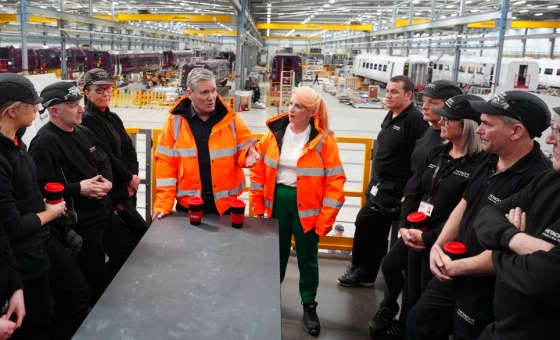This is the last article you can read this month
You can read more article this month
You can read more articles this month
Sorry your limit is up for this month
Reset on:
Please help support the Morning Star by subscribing here
COMMUNITY is often a polarising term for those who identify as LGBT+ in London.
In the past year I’ve been privileged to interview many of the most interesting academics, artists, health workers, activists and other figures operating within this sphere today.
When asked how they perceive the modern-day community, a myriad of different responses have arisen, foremost among them being that there is no real all-encompassing community.
Whereas the umbrella term of “lesbian, gay, bisexual and transgender” (LGBT) may have once referred to a strong community joined together by their outsider status, the greater assimilation provided by gay marriage and suchlike has led to a dilution of those ties.
“Divided” and “fragmented” were terms used for its description. Many say it is now more apt to describe ourselves as communities, separated not only by our own differences but also by a lack of internal education as to our respective needs.
A particular division is thought to exist between the LG and BT groups. Many events or spaces advertised as “LGBT” contain no mention of bisexual or transgendered people.
Some transgendered people report being misunderstood or ridiculed by gay men. In “Toiletgate,” a gay policeman publicly refused to let a transgendered woman use the female toilets at Pride. Particularly ardent groups of feminist lesbians refuse to accept the gender of transsexual women.
Among the gay male community, many commented on how an obsession with physical appearance was saddening and often isolating for those who didn’t fit the muscled mould.
Men said that they felt instantly pigeon-holed or labelled on account of the way they looked.
Some suggested that this “body fascist” psyche was an external adulthood result of internalised oppression when growing up.
Grindr and Instagram were referenced as methods of seeking an ephemeral validation from the outside that could not be adequately realised inside.
The gay male community’s sexualised and widespread use of drugs was spoken about in particular.
Described as an ongoing “chemsex” syndemic, it is linked to rapidly rising HIV rates and pertinent theories have been put forward as to its origins. Deep-seated intimacy and shame issues, of gay sex being the “wrong sex,” crop up as allegedly contributing to this psyche, as well as the fact we forget that this community has been through “a war” in the last three decades with the sheer scale of the HIV/Aids epidemic.
While no-one mourned the loss of those Aids days, there was a prevailing ethos that a large part of the community’s savage splintering since that time was led by increased capitalist assimilation and the advent of the “pink pound.”
Again and again the contemporary gay scene was described as “money-orientated,” centred on clubs and bars rather than local community groups. Gay marriage was described as a “box-ticking” exercise for assimilation, giving a false sense of acceptance for gay Tory boys desperate for that acceptance.
Some mentioned a perceived lack of cultural diversity on the gay scene — that if you were white, pretty and earning money, you might feel more a part of any LGBT community there is than if you weren’t.
The money-orientated sculpting of the scene was attributed as having deadened the very concept of LGBT Pride.
Many said that we’ve lost a sense of what’s important because we’re still not completely safe on our streets — see the recent bleach attack in Vauxhall for evidence.
Many mentioned how we’ve seen before that in times of austerity minorties can find themselves targets, and with the rise of right-wing groups like Ukip, we need to bond together now as a community more than ever before.
But some said that their own LGBT community was simply how they created it. To one girl it was simply her girlfriend and her gay flatmate.
To the musician Othon, he created his community out of his friends and reflected this in his music video as a thing of hope.
Francisco Gomez de Villaboa showed in his X-Press Yourself exhibition the solidarity of different nationality LGBT communities in London and their contribution to its rich multicultural fabric.
When photographer Manu Valcarce documented the impoverished LGBT subjects of Margate for Out of Sight, Out of Mind, one photograph showed his subjects in a kiss. People find hope and bring one another together in every environment.
And for myself personally, talking to all these people and listening to their impassioned views has proved to me that there is an LGBT community alive and vibrant in London, of which I am more than proud.
n Patrick Cash is a journalist, performer, creative writer and assistant editor for London LGBT magazine QX. He has initiated the community forum Let’s Talk about Drugs and Gay Sex, supported by Unite London & Eastern Region LGBT committee.








